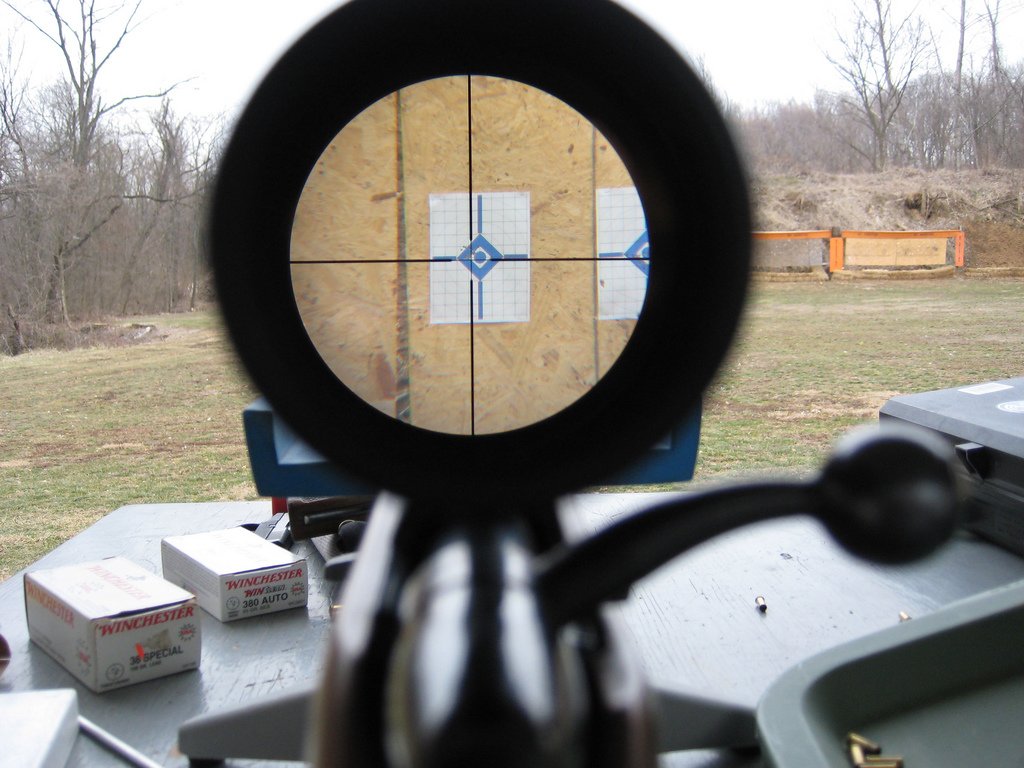
The first big tool of the engineer is the requirement list. It will define the outcome of the development and thus be a companion on the whole way. This also mean that is is always open for change. It is made in cooperation with the customer: You know what to do and what to deliver and the customer can’t argue against it.
>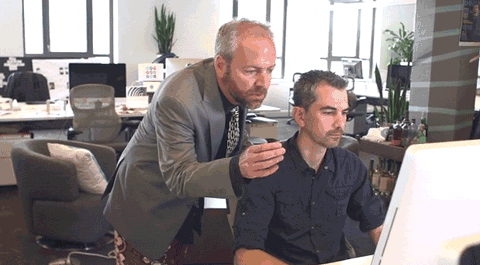
As a good example what happens when you don’t define your outcome properly I can recommend watching this part of the movie Pentagon Wars from 1998
Now government agencies are especially moody, because they are not really spending their own money, but private customers can make trouble too.
That’s the reason why you want to define quickly the framework for your project and the outcome of your work.
A readily available version for a requirement list is available here for your convenience. At the start of a new project, it is recommended to print it out and go through it together with your customer.
S.M.A.R.T.-goals
As a guideline, you can stick to the smart goals principle. It is very well explained by George T. Doran, so I will just quote him here:
Ideally speaking, each corporate, department, and section objective should be:
- Specific – target a specific area for improvement.
- Measurable – quantify or at least suggest an indicator of progress.
- Assignable – specify who will do it.
- Realistic – state what results can realistically be achieved, given available resources.
- Time-related – specify when the result(s) can be achieved.
Notice that these criteria don’t say that all objectives must be quantified on all levels of management. In certain situations it is not realistic to attempt quantification, particularly in staff middle-management positions. Practicing managers and corporations can lose the benefit of a more abstract objective in order to gain quantification. It is the combination of the objective and its action plan that is really important. Therefore serious management should focus on these twins and not just the objective.
— George T. Doran, There's a S.M.A.R.T. way to write management's goals and objectives.
Important to mention again: The emphasis in the first sentence is on ‘ideally’, that means some goals may not fit under one or more of these points.
As with most rules: try to stick close with it as necessary, but don’t let them hinder your business.
Going through the requirement list
The requirement list is a collection of all the necessary criteria the final product should archive.
The headline of the requirement list takes the name of the department and/or person that is responsible for the project. The project name and start date are filled out too at the start of the project.
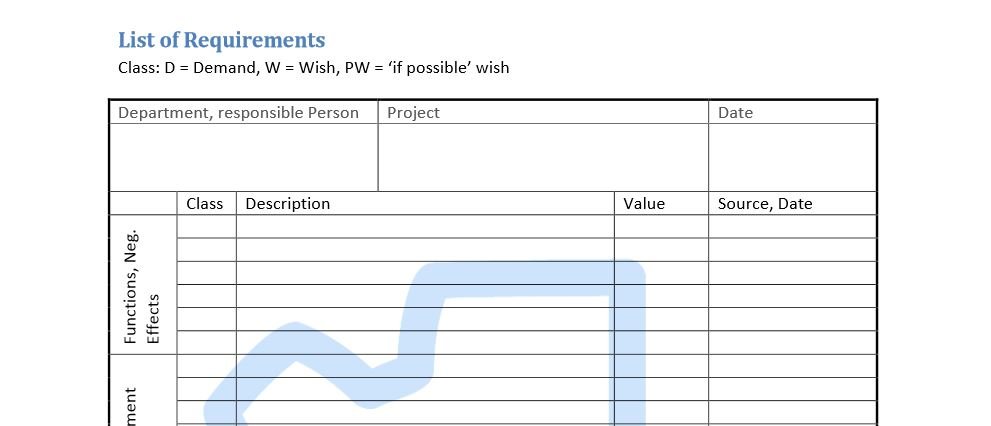
The importance of the criteria is given in "class" by marking it with demand for necessary conditions, wish for criteria that would benefit the device and if possible wish for everything that could be added as a bonus.
The category specifies the classification under which the criteria falls like ergonomics or safety.
Description tells what the criteria is about, while the value is giving a measurable number or target. This can be the amount of power, number of parts, level of noise.
Source and date are then added to keep track over the changes of the requirement list. The source is either the regulation that demands a certain value, like noice, or is the name of the person which approved the decision.
Again: have a look at the requirement list here to follow through the explanation.
Criteria
The criteria for the necessary requirements can of course be regarded as flexible. It depends completely on your desired product what kind of goal you are setting. It might even be possible to use it for other goal, like writing an article, planning a party or a holiday. The goal criterias are very flexible.
On the other hand it is important to have the criteria clearly defined, as to make their fulfillment possible and controllable. This is important for you to be able to focus work onto reaching the goal, and your customers to trust your expertise and control the outcome.
Functions, Neg. Effects

What function should the device fulfill? This may be the most important question regarding your MVP (minimum viable product). This is to be set to define the main function of the product. The negative effects represents everything that should not happen to the product. This obviously should mostly encircle effects that might occur in operation.
Examples: Stationary device, heat compensation, continuous measurement (monitoring), facilitates purchase, brews 10 liters/h of coffee.
Environment

How is the device equipped to deal with its surrounding circumstances? Does it matter how much noise and pollution it creates? Vibration, shielding, heat: everything that affects the environment, is affecting the product or has an impact on the functionality of it.
Examples: External power supply, sterile, can carry load, waterproof, heat shielding, electromagnetic radiation, vibration sensitivity.
Safety

What dangers can the device pose to the user? What can be done to prevent them? How long is the device supposed to operate until it is not useable anymore? These are all questions whose answers can have an impact on the functionality of the device. Everything that can prevent accidents and danger to the functionality of machine and person should be noted.
Examples: Fulfills hospital standards, life expectancy (in operation), waterproof, EM shielded, encrypted.
Ergonomics, Design
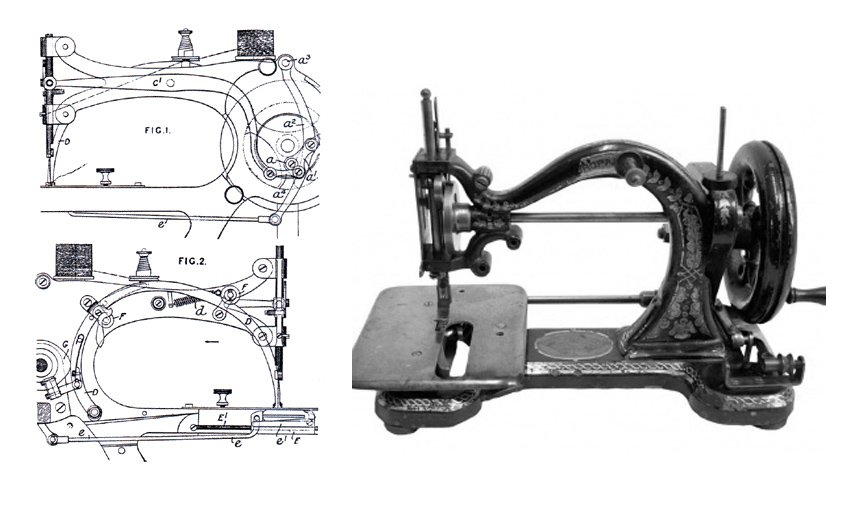
Ergonomics and design are surrounding the functionality of the device. They enable a comfortable use and fulfilled experience when using it. Even though they are not part of the main function, ergonomics and design are main selling points that can swing the balance of competition in your favor.
Examples: Stackable, noiseless operation, automatic measuring, classic hospital look, access from front, rounded edges, clean look.
Construction

During construction, there are other aspects parallel to the main functions which have to be taken into account. These aspects have not a direct contact to the user, but influence the assembly of the device.
Examples: Compatible to put on similar hospital devices, maximum weight, adaptability for further developments, individual logos, passive cooling, useable with left hand.
Production

The kind of material and parts used in production is stated in this category. If it is important for the function, it can be noted here how the device should be assembled. According to the quantity of the produced device, it can be beneficial to use another production method to save costs.
Examples: Norm parts, quantity, welded, screw construction, 3D-printed, easy disassembly.
Transportation

This category is especially important for physical products. If a device is big or fragile enough to require a special kind of transportation it should be noted here. Software could be build to be distributed over different channels. Does the format have to be a certain kind to be made available in an app-store?
Examples: On cart, no disassembly, file format, careful packaging, only one semi truck, no shipping over water, needs to be protected from salt water.
Service

Additional to the product, there can also be services surrounding the product. These range from the first customer contact in marketing to the post market surveillance to find out the source of the customers problems. Parallel to ergonomics and design, there are also points here that enable the usage of the device for the customer. Also important here is the criteria how long the device is used daily and when.
Examples: Guarantees, operation time, plane surfaces, big display, hotlines, useable when wet, accessible by worker, panel can only be opened with special key.
Costs

Last but not least the most important category: How much money should it cost? What are the preliminary expectations about the price? What should additional services cost? While this is not a place for accounting itself, the value should be checked and refreshed when new information is available (this is true for all other criteria, too). Without price expectation it cannot be decided how the product is to be build, from what parts, with which functions and in what time.
Examples: Usage of low priced parts, production costs excl. manufacturing, service fees, fixed payment, flexible payment, accepted currency.
Conclusion
The different categories are not always clearly divisible. A need for a handle on the device can be put into design, ergonomics, safety or even service. Where it is most fitting for your product has to be decided by you. But wherever it is: there is no value judgement between the different categories.
The filled out requirement list it now targeted onto the goal and everything that comes later has to be judged by it and will take a lot of work to correct its course. It can also be seen how the requirement list benefits from the done research, because a lot of lessons learned there can result in criterias in it.
A later change of the requirement list can render a lot of work useless, so make sure that you have your target in sight before you let your arrow fly.
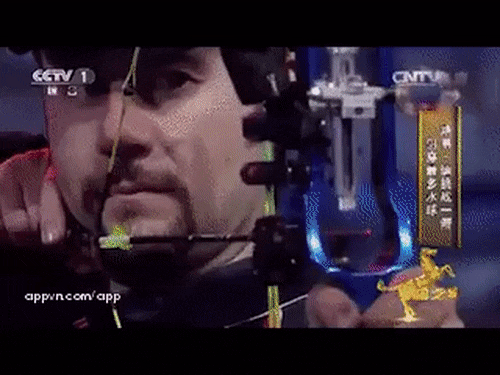
To be continued
Did you already read...
the first part: What does an Engineer do?
the second part: The first STEP on the way to YOUR Product: Inventing
the third part: The Other Kind of Research: Put your IDEA into the World

